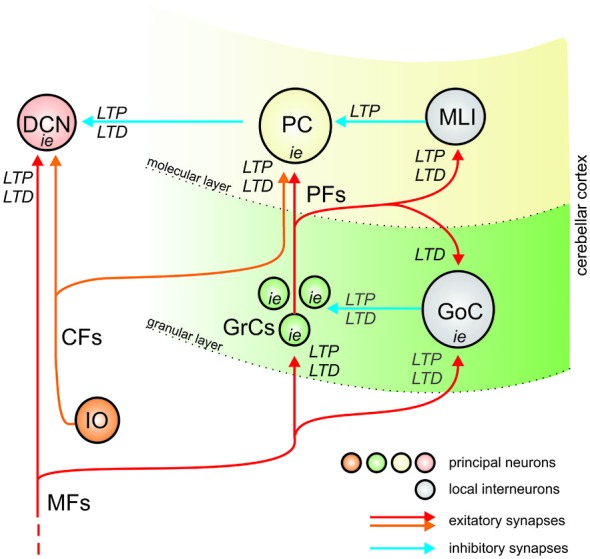Figure 1.

The organization of plasticity in the cerebellar circuit. The drawing shows that the cerebellum is made of three main sub-circuits, comprising the granular layer, molecular layer and deep cerebellar nuclear (DCN). The granular layer and molecular layer form the cerebellar cortex. Both the cerebellar cortex and DCN are activated by MFs, and the cerebellar cortex output inhibits the DCN. Therefore, the cerebellar cortex forms a large inhibitory loop for DCN. Inside cerebellar cortex, in turn, MFs activate GrCs which emit PFs activating Purkinje cells (PCs) and local interneurons inhibit the principal neurons (GoCs inhibit GrCs, MLIs inhibit PCs). PCs and DCN cells are also activated by Climbing fibers (CFs). Therefore, a similar feed-forward inhibitory scheme is implemented in all the three cerebellar subcircuits. LTP, LTD and plasticity of intrinsic excitability (i.e.,) have been either observed or predicted in all subcircuits. The forms of plasticity determined experimentally are reported in black, those predicted by computational modeling are reported in gray. Excitatory and inhibitory synapses are represented using red and blue arrows.
